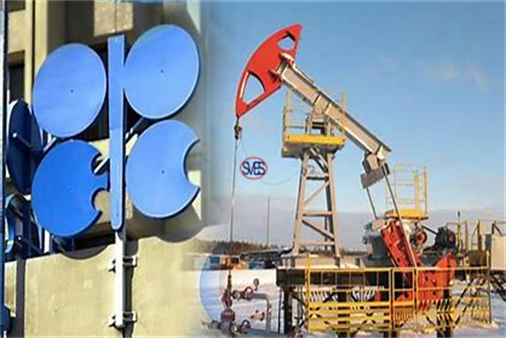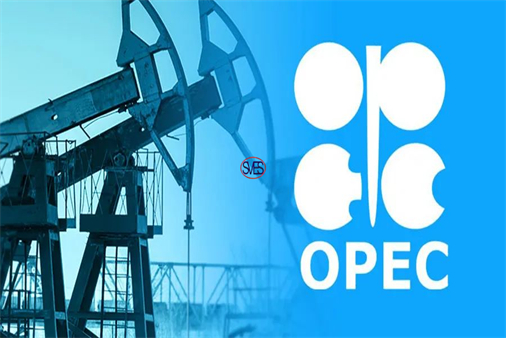
Opec 'circle of friends' to shrink International oil price control?-2
2024-01-22 10:00Opec 'circle of friends' to shrink International oil price control?-2
Opec and Opec + production quotas
Opec holds 80.4% of the world's proven oil reserves, while the 11 non-OPEC producers account for 9.7% of the world's total proven oil reserves. The alliance represents an organisation with 90 per cent of the world's proven oil reserves, with huge potential to influence the oil market.
It is worth noting that the group's production varies widely, and within Opec, Saudi Arabia's oil production dwarfs that of other members. In 2022, the country will produce 10.4 million barrels of oil per day, almost a third of Opec's daily output. This gives Saudi Arabia an absolute say in the organization. In addition to Saudi Arabia, there are several other important member states such as Kuwait and the United Arab Emirates, which have become a real force around the market. As a result, foreign media often joke that the real decisions come from Riyadh, not Vienna, where Opec is headquartered. The volume of Russian resources in Opec + is equal to that of Saudi Arabia, and it is also one of the important "talkers" of the organization.
Opec has set production quotas for member countries since 1982 and meets several times a year in Vienna to set specific production quotas, but the frequency of meetings has increased to once a month in 2020 amid the pandemic. Opec's quota determination process and factors are not transparent, but there is evidence that the quota is related to each member's production capacity. Because of Opec's failure to develop effective monitoring mechanisms and penalties, Opec members who are highly dependent on oil revenues often overproduce in order to obtain more oil revenues. That has sharply reduced Opec's ability to shape international oil prices.
Since the 21st century, especially after the collapse of oil prices in 2014 and the shale oil and gas revolution in the United States, Opec has faced severe challenges in stabilizing oil prices. With low oil prices, the compliance of Opec members' production quotas has been greatly improved. At the end of 2016, the newly formed Opec +, in response to the disruption of US shale oil to the international market, began to adjust production quotas to voluntary allocations, which would nominally give Opec more market power, especially by absorbing Russia as a potent force, but research data show that these producers' compliance with quotas is low.
From 2017 to 2022, five countries - Russia, Kazakhstan, Azerbaijan, Oman and Mexico - all have varying degrees of overproduction, greatly undermining Opec's plan to influence oil prices through coordinated changes in member countries' oil supply. In addition, in the longer term, some member countries did not have specific production quotas due to civil unrest, war or sanctions: Iraq did not have quotas from at least 1998 to 2007, Libya has not had quotas since 2011, and Iran and Venezuela have not had quotas since 2019.
Although many studies have proposed that Opec + has no substantive role in stabilizing international oil prices, its rich oil and gas resources and low to astonishing production costs make Opec + a presence in the international oil market that cannot be ignored, especially in the commodity futures market where the wind is expected, even if such an organization does not "move", it has no move to win.

Opec + 's production cut dilemma
Since the third quarter of 2023, Opec + production cuts have played an important role in balancing global oil supply and demand, reversing the market's pessimism to a certain extent. At the same time, the negative impact of the decline in investment attractiveness of oil futures caused by rising interest rates has gradually faded, and the expectation of interest rate hikes has also been reduced, and it seems that everything is going well for Opec +.
However, the latest oil market forecast released recently by S&P Global Commodity Insight shows that total liquid hydrocarbon production in the United States reached 21.9 million barrels per day in the fourth quarter of 2023, of which crude oil and condensate production reached 13.8 million barrels per day, both setting global records. At the same time, oil production in Brazil and Canada is at an all-time high. Non-opec + oil production growth, led by the United States, is expected to hit a new record in 2024, reaching 2.7 million barrels per day.
This means that not only will the United States produce more oil than any other country in history, but it will also export nearly as much oil (crude, refined products) as Saudi Arabia and Russia combined. This is a dramatic change from 2008, when US oil production was at a 62-year low and exports were at zero.
From a demand perspective, S&P Global forecasts that global crude oil demand will hit a record high in 2024, but demand growth of only 1.6 million barrels per day is more than enough to be covered by new production from producers outside Opec +.
S&p Global also analyzed that non-OPEC + production growth and Opec + production cuts will make Brent oil prices fluctuate between $75 and $100 per barrel in 2024. Opec + efforts to control production will set a floor for international oil prices, that is, prevent them from falling below a certain price floor, while upward oil prices will lead to increased production in non-OPEC + producers, especially in the United States, where production costs are higher, and thus restrain prices. At that time, in order to prevent oil prices from falling too much, Opec + will face greater pressure to reduce production. The game between the two sides will form a new equilibrium. The achievement of this balance is likely to be the process of Opec + gradually losing market share.

Brazil join
After Angola withdrew from the circle, some analysts believe that this is the decline of Opec + influence in Africa. Opec + is not entirely unaware of its waning influence and has taken steps to amplify it, one of which is to invite Brazil to join Opec +.
Also at the Opec + production reduction meeting held in November 2023, Brazil's Minister of Energy announced on behalf of President Lula that he would be invited to join Opec + in January 2024. After Brazil announced it was joining Opec +, its currency, the real, received more attention.
The analysis believes that Brazil's accession to Opec + is not a whim, but the result of careful consideration. By joining Opec +, Brazil will have a seat at the negotiating table with significant influence on the international oil market, helping to maximize the use of its vast oil resources to exert international influence. This strategic alliance could expand Brazil's influence on global oil prices and even reshape the international oil market. It also signals Brazil's recognition of the importance of working with other producers to navigate complex oil markets.
Brazil is a big oil-producing country in South America, with unusually rich pre-salt oil and gas resources. According to the U.S. Energy Information Administration, Brazil will produce 3.2 million barrels per day of oil in 2022. Brazil's entry into Opec + means that there will be a huge variable in the market game between non-OPEC producers led by the United States and Opec + led by Saudi Arabia and Russia.
Opec faces a loss of market share in 2024
Reuters recently reported that Opec may face further market share losses in early 2024 after Angola's withdrawal from Opec and increased production from non-OPEC producers. With Angola's exit, Opec's crude oil production will fall below 27m barrels a day, less than 27 per cent of the world's total supply of 102m barrels a day. The last time Opec's market share fell to this level was at the height of the pandemic, when global oil demand fell by nearly 20 percent.
In early December 2023, Angola officially announced its withdrawal from Opec due to disagreements with the cartel over oil production quotas. Angola's crude oil production in November 2023 was 1.15 million barrels per day (BPD), down sharply from 1.88 million BPD in 2017, largely due to underinvestment in Angola's aging deepwater fields.
According to Reuters, Opec has maintained a 30 to 40 percent market share. But record US shale production has severely eroded Opec's market share. U.S. oil production reached an all-time high of 13.1 million barrels per day in 2023, largely due to oil producers improving drilling efficiency and productivity in response to low oil prices.
Some analysts predict that U.S. oil production growth will slow in 2024, but others believe that the U.S. Energy Information Administration's 2024 U.S. oil production estimate is too conservative.
Opec believes the loss of market share is likely to be temporary. Opec forecasts that Opec's global market share will reach 40% by 2045, mainly due to the decline in non-OPEC crude oil production from the early 2030s.
Opec forecasts that global oil demand will reach 116 million barrels a day by 2045, 6 million barrels a day higher than its 2022 report forecast, driven by growing demand in India, China, Africa and the Middle East.
Analysts believe India will be the main driver of global oil demand growth in 2024, largely due to the country's rapidly growing population. Moreover, with the Indian government's recent support for coal-fired power generation, the country's transition to renewable energy is expected to be much slower than in China.
